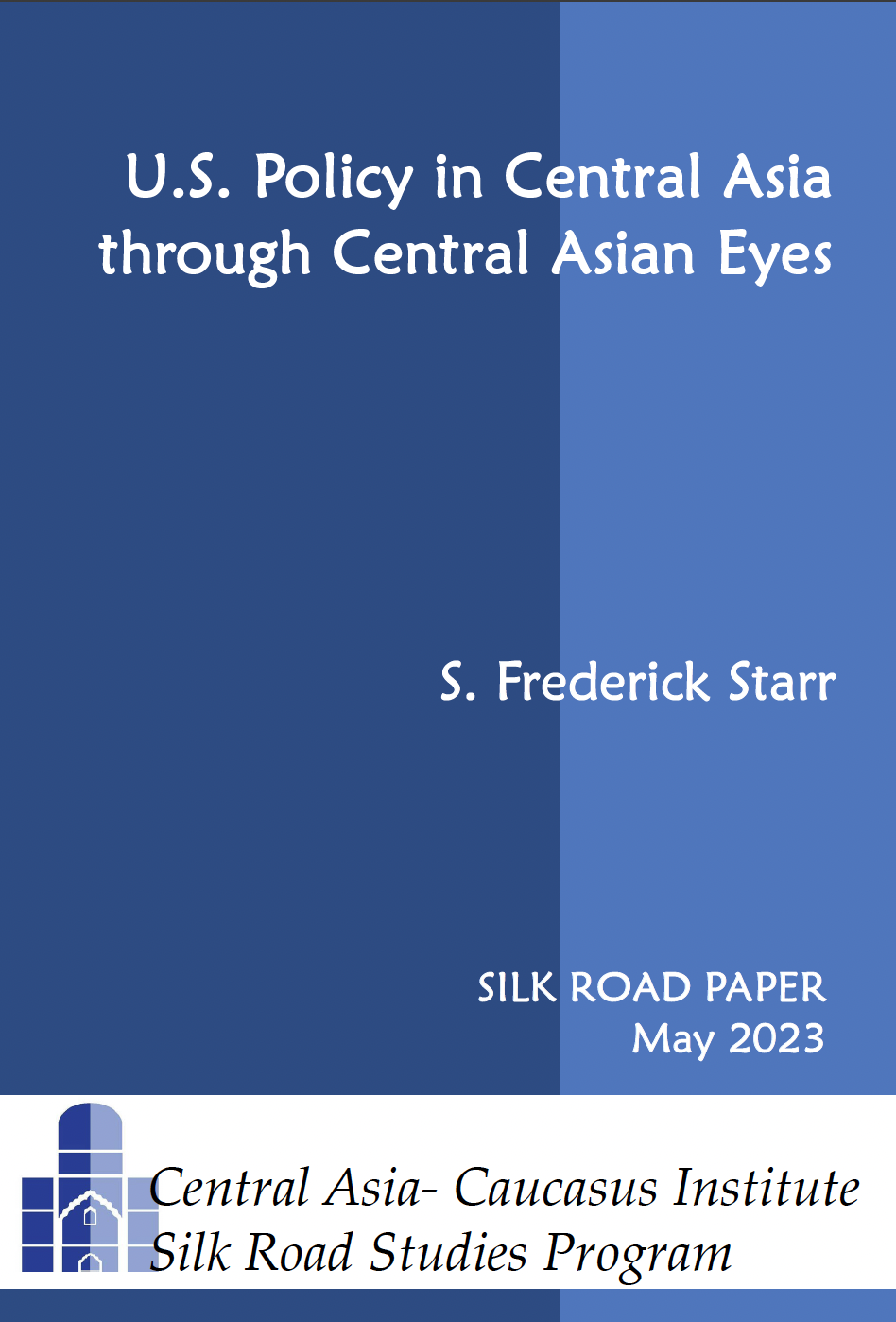Kyrgyzstan and Tajikistan Resolve Final Border Dispute: A Historic but Fragile Peace
By Aigerim Turgunbaeva
On March 31, the presidents of Kyrgyzstan, Tajikistan, and Uzbekistan met in the Tajik city of Khujand to officially announce that all territorial disputes between their countries had been resolved. While future tensions cannot be ruled out, the region’s leaders now seem to believe that cooperation brings more benefits than conflict. For the Ferghana Valley, that shared outlook may be the strongest hope for lasting peace.

BACKGROUND: On March 13, Kyrgyz President Sadyr Japarov and Tajik President Emomali Rahmon signed a landmark treaty in Bishkek that definitively demarcates the entire 1,000-kilometer border between the two countries. The signing ended decades of intermittent clashes and unresolved territorial disputes rooted in the Soviet-era administrative boundaries. The agreement has been heralded as a major achievement in Central Asia’s regional integration efforts. Yet, the circumstances under which the deal was brokered—notably the lack of transparency, absence of public debate, and suppression of dissent—raise important questions about governance, public trust, and the future of cross-border relations.
The border between Kyrgyzstan and Tajikistan has long been a source of friction, shaped by convoluted Soviet-era administrative divisions that ignored ethnic, geographic, and cultural realities. When both countries gained independence in 1991, these internal lines hardened into contested international borders. Enclaves, disputed villages, and overlapping claims turned the border zone—particularly Kyrgyzstan’s Batken region—into a hotbed of tension.As scholars have noted, Soviet planners in the 1920s and 1930s deliberately drew borders in ways that divided ethnic groups in order to weaken potential nationalist movements, creating enduring fault lines.
Violent clashes over land, roads, and water access occurred frequently, notably in 2014, 2021, and 2022. The 2022 conflict, which left more than 100 people dead and forced over 100,000 Kyrgyz citizens to flee their homes, was the deadliest to date. Civilian infrastructure, including schools and homes, was destroyed, exacerbating mistrust and trauma. Yet this tragedy also marked a turning point, prompting both governments to prioritize renewed negotiations. Talks resumed in late 2022 and intensified through 2023 and 2024, culminating in the March 2025 agreement.
Years of border-related violence left deep scars on both Kyrgyz and Tajik communities. Skirmishes often began with disputes over water access or road usage but escalated quickly due to the presence of military and paramilitary forces in civilian areas. Armed confrontations resulted in civilian casualties, displacement, and destruction of property. The 2021 and 2022 conflicts in particular revealed how unresolved borders and competing nationalist narratives can turn small incidents into full-scale battles.
These events created a humanitarian crisis, especially on the Kyrgyz side. Thousands were displaced multiple times, while cross-border trade and local economies ground to a halt. Despite multiple ceasefires and ad hoc agreements, durable peace remained elusive until the new treaty.
IMPLICATIONS: The treaty signed in Bishkek demarcates the full 972-kilometer boundary and resolves all outstanding territorial claims. While the full text of the agreement remains undisclosed, officials have confirmed that contentious zones like the Tajik exclave of Vorukh and surrounding Kyrgyz villages like Dostuk were key components of the deal. Reports suggest that land swaps and security guarantees played central roles in achieving consensus. Ceremonial gestures — including the reopening of checkpoints and reciprocal presidential visits — symbolized a new era of cooperation. Both governments framed the agreement as a diplomatic triumph.
The March 2025 agreement is notable not just for what it achieves, but how it came to be. After over three decades of deadlock, the treaty represents the first time that both governments have fully delineated and mutually accepted their shared border. While the specifics of the final map have not been made public, officials claim that all 972 kilometers have been agreed upon, including previously disputed enclaves and water-sharing arrangements.
Unlike past negotiations, which were often derailed by public outrage and nationalist pressures, the latest talks were conducted in near-total secrecy. Kyrgyz President Japarov pursued a top-down approach, sidelining parliamentary debate and civil society in favor of closed-door diplomacy with Dushanbe. Critics argue that this strategy undermined democratic oversight. At least two prominent Kyrgyz activists — including opposition figure Ravshan Jeenbekov — were detained for criticizing the deal and calling for public input on territorial concessions.
Despite these concerns, the breakthrough likely stemmed from a convergence of political incentives. For Japarov, resolving the border conflict bolsters his image as a strong and pragmatic leader, particularly after facing domestic backlash over economic stagnation and governance issues. For Rahmon, the agreement strengthens Tajikistan’s security and eases pressure on a regime that has faced increasing scrutiny over human rights abuses and political repression.
Moreover, international pressure and quiet diplomacy may have played a role. Both Russia and China—key players in the region—have interests in stabilizing Central Asia’s volatile borderlands. Beijing in particular has invested heavily in cross-border infrastructure and trade routes under its Belt and Road Initiative, and further conflict between Kyrgyzstan and Tajikistan risked disrupting its regional ambitions. Despite both countries being CSTO members, Russia has kept its distance from the Kyrgyz-Tajik conflict. After invading Ukraine, Moscow lost interest in regional mediation. In October 2022, President Putin admitted Russia had “no intention of playing a mediating role,” offering only Soviet-era maps to aid negotiations. The Kremlin’s reluctance stems from earlier setbacks. A 2020 offer to mediate was met with a protest from Tajikistan, and Moscow’s failure to resolve the Armenia-Azerbaijan conflict made it cautious about another potential diplomatic failure in its perceived sphere of influence. Russia’s limited role has highlighted Uzbekistan’s emergence as a key regional mediator. Since 2018, President Mirziyoyev has led efforts to revive regional dialogue through Central Asian summits without outside powers like Russia or China. By 2025, Tashkent had helped reopen communication between Rahmon and Japarov — who until recently would not even shake hands. Uzbekistan’s active diplomacy was especially visible in early 2025, when the prime ministers of all three countries met to discuss border issues.
The Kyrgyz-Tajik border accord could set a precedent for resolving similar disputes in Central Asia. Yet, the long-term success of the Kyrgyz-Tajik deal remains uncertain. Much depends on how the treaty is implemented on the ground. Villagers affected by the redrawn boundaries have voiced concerns about losing access to farmland, water sources, and ancestral homes. Without robust compensation mechanisms or inclusive dialogue, displaced or dissatisfied communities may become flashpoints for renewed tensions.
In Kyrgyzstan, the lack of transparency has already fueled public distrust. Some residents of Batken—the region most impacted by the deal—have protested what they see as the government’s unilateral ceding of territory without adequate consultation. Japarov’s administration has struggled to control the narrative, resorting to arrests and censorship to stifle dissent. If local grievances are ignored, the agreement could backfire, becoming a source of instability rather than peace.
Regionally, the agreement may also shift the balance of power. Tajikistan, a historically more authoritarian state, appears to have secured favorable terms in some contested areas, raising concerns in Kyrgyzstan about unequal negotiations.
Nonetheless, the border agreement represents a significant, if imperfect, step forward. It removes a major source of armed conflict, potentially allowing both governments to redirect resources toward economic development and infrastructure. It also provides a foundation for cross-border cooperation on water management, trade, and regional security, if both sides are willing to engage beyond security optics.
Whether this peace holds will depend not only on maps and treaties, but on how governments engage their citizens in building a shared future across once-divisive lines.
AUTHOR’S BIO: Aigerim Turgunbaeva is a journalist and researcher focusing on Central Asia. Aigerim writes about press freedom, human rights, and politics in the former Soviet space, and delves into China’s interests in the region for publications like The Diplomat, The Guardian, Reuters, Eurasianet.
Will Kyrgyzstan Become Green Again?
By Rafis Abazov
Kyrgyzstan's ability to achieve sustainable development and transitioning to a greener economy hinges on a proactive approach by the country’s government, regional and international collaboration in addressing the impact of climate change and promoting long-term economic growth. However, Kyrgyzstan is grappling with significant environmental challenges, ranging from deforestation to water pollution, which threaten its long-term sustainability. In recent years, Kyrgyzstan has made significant strides in integrating green economy principles into its national development agenda. This shift reflects a broader commitment to achieving the United Nations’ Sustainable Development Goals (SDGs) and transitioning toward a more environmentally conscious, sustainable economy. The question remains: can Kyrgyzstan, a cash-strapped country with limited financial and human resources, mobilize enough resources to implement its green agenda and truly become sustainable?

Photo Credit: Pavel Fertikh
BACKGROUND: Kyrgyzstan’s environmental landscape is a mix of alpine wild woodland and man-made tree plantations. While the country boasts the beauty of its national parks and natural reserves, including major rivers like the Naryn and Talas, preserving forests and wild natural habitats remain pressing concerns. Three decades of economic and social transition have left a legacy of underfunded environmental policies, and addressing these issues remains critical to Kyrgyzstan’s green future.
One factor is the rapid rural population growth and collapse of the rural economy in recent decades, which have exacerbated the pressure on biodiversity. Impoverished farmers have turned to the extensive use of land resources, including the use of land in protected wild areas to support their income as a significant portion of the population still depends on subsistence agriculture and livestock production. This has led to deforestation, overgrazing, and land degradation threatening Kyrgyzstan’s biodiversity and rural livelihood. A second factor is corrupt business practices as some private companies enrich themselves from large-scale illegal logging, overgrazing and collecting wild harvest, further contributing to soil erosion and deforestation.
In fact, according to the Food and Agriculture Organization (FAO), between 1990 and 2015 the forest area in Kyrgyzstan declined by approximately 10.1 percent and currently forest covers a meager 4.3 percent of its land area, one of the lowest in Central Asia. The third factor is the lack of law and regulation enforcement and lack of funding for the implementation of national and international programs for preserving biodiversity and natural habitats.
The government has incorporated green economy principles into its national strategies, such as the “National Development Strategy 2040” and the “Green Economy Development Program.” These policies emphasize sustainable resource management, environmental protection, and the promotion of renewable energy sources. The SDG Agenda 2030 was designed to solidify Kyrgyzstan’s pledge to address environmental and economic challenges in a balanced, inclusive manner. By integrating green principles into its national development strategy, Kyrgyzstan seeks to ensure that future growth is both environmentally sustainable and economically beneficial.
However, the government must undertake significant efforts to advance sustainability and more effectively address environmental concerns and challenges. In recent years, the impacts of climate change have become increasingly evident, making the protection of investments and donor funding crucial for ensuring long-term economic resilience.
IMPLICATIONS: Kyrgyzstan’s success in achieving its green economy objectives will hinge on its ability to effectively manage its existing budget and collaborate with regional and international partners. The country has already made strides in this area, having engaged in several key partnerships with international organizations and foreign governments. For instance, the United Nations Development Programme (UNDP) and the European Union (EU) have provided technical and financial support for sustainable development projects, including those focused on climate adaptation, biodiversity conservation, and energy efficiency.
One such initiative is the “Green Economy for Sustainable Development” program (2018), supported by the UNDP and aimed at strengthening Kyrgyzstan’s capacity to achieve the SDGs. The program focuses on enhancing the country’s policy frameworks, improving environmental governance, and building the capacity of key institutions.
Additionally, Kyrgyzstan has received support from international financial institutions like the World Bank and the Asian Development Bank (ADB) to fund green infrastructure projects and improve environmental resilience. Regional cooperation is also slowly emerging as Kyrgyzstan is deeply integrated into Central Asia’s complex water and energy systems. Over the past few years, Bishkek began promoting collective progress toward sustainable development and collaboration with neighboring countries, particularly on water management, biodiversity management and forest preservation projects. Efforts to revitalize the “Green Central Asia” initiative, which aims to enhance regional cooperation on climate resilience and environmental protection, could be instrumental in supporting Kyrgyzstan’s green transition.
Furthermore, the Kyrgyz government would like to introduce initiatives to promote renewable energy sources, particularly in the hydropower sector. According to the UNDP it needs to raise at least US$ 8.5 billion by 2030 for its green transition. Investments into small and medium-sized hydropower plants are encouraged, as well as exploration of the potential for solar and wind energy. The government’s willingness to explore innovative energy solutions indicates its recognition of the importance of diversifying its energy portfolio and reducing reliance on fossil fuels. Moreover, the Kyrgyz government works to address structural and institutional challenges for achieving green goals. Over the past three years it conducted a series of activities to address corruption and institutional ineffectiveness, which have historically undermined the effective implementation of environmental policies.
If the country is to “become green again,” addressing the green agenda must be prioritized, along with enacting policies to mitigate further degradation. Alibek Matiev, Head of the Green economy and tourism unit at the Ministry of Economy and Commerce declared that “The task ahead is not just ambitious, but urgent for our nation’s survival.”
Kyrgyzstan has limited financial resources and therefore needs to mobilize sufficient capital to fully implement the SDG Agenda 2030 and achieve its green economy objectives. Kyrgyzstan’s government faces significant fiscal constraints, with high levels of public debt and a reliance on foreign aid and remittances to support its economy. As such, raising the necessary funds to implement large-scale environmental and green economy projects remains a daunting task. The Kyrgyz government should recognize the importance of mobilizing private sector investments to support its green agenda. It needs to develop a positive business environment for attracting private investments, green technologies and infrastructure. To overcome this barrier, the government needs to create a more favorable business environment for sustainable investments by improving regulatory transparency, reducing bureaucratic hurdles, and offering incentives for green investments.
In the past, the cash-strapped Kyrgyz government has often relied on international organizations, such as the World Bank, ADB, EBRD, UNDP and others to finance its green projects and to address its economic weaknesses. However, in the current environment Bishkek should turn to other forms of financing especially from regional players – public and private – to raise funds for its green energy agenda. For example, neighboring countries such as Kazakhstan and Uzbekistan heavily rely on the water resources coming from Kyrgyzstan and Tajikistan and frequent conflicts have erupted over transboundary water use. It is time that all Central Asian counties identify mutually beneficial business collaboration opportunities and refrain from confrontation.
CONCLUSION: The formation and implementation of Kyrgyzstan’s environmental policy is a complex and multifaceted process that requires a balanced approach to environmental, economic, and social challenges. Kyrgyzstan’s path to becoming green again is fraught with both opportunities and risks. The Kyrgyz government should develop strong institutional frameworks and regulatory enforcement mechanisms to promote sustainable practices, especially in industries like mining and agriculture, which are critical to the national economy but also major contributors to environmental degradation.
AUTHOR BIO: Rafis Abazov, PhD, is a director of the Institute for Green and Sustainable Development at Kazakh National Agrarian Research University. He is author of The Culture and Customs of the Central Asian Republics (2007), The Stories of the Great Steppe (2013) and some others. He has been an executive manager for the Global Hub of the United Nations Academic Impact (UNAI) on Sustainability in Kazakhstan since 2014 and facilitated the International Model UN New Silk Way conference in Afghanistan and other Central Asian countries.
The China-Kyrgyzstan-Uzbekistan Railway: China's Strategic Expansion in Russia's Backyard
By Syed Fazl-e-Haider
China is moving forward with the long-delayed 523-kilometer railway connecting Kashgar in northwest China to Kyrgyzstan and Uzbekistan as part of its Belt and Road Initiative (BRI). The China-Kyrgyzstan-Uzbekistan (CKU) railway, proposed in the 1990s, officially began construction on December 27 in Jalalabad, Kyrgyzstan. This route offers a faster, cheaper alternative to existing connections between China and Europe via Kazakhstan and Russia.
Excluding Russia from the project has drawn criticism from Moscow, which views Central Asia as its sphere of influence. However, Russia, heavily reliant on China due to Western sanctions over its 2022 Ukraine invasion, is unable to oppose the development.
The CKU railway, seen as a regional game-changer, promises to enhance trade and connectivity across Central xAsia. However, it also raises security concerns, as the route may facilitate cross-border activities of drug traffickers, terrorist groups, and militant organizations.
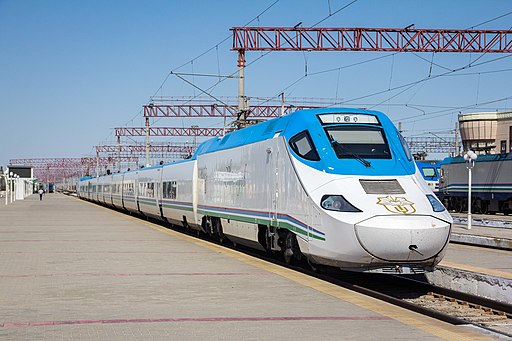
BACKGROUND: The CKU railway, first conceived in 1997, faced significant delays due to financial, political, technical, and geopolitical challenges. A major obstacle was political instability in Kyrgyzstan, which stalled progress for 15 years. The project was revitalized in 2012 following a visit to Beijing by then-Kyrgyz President Almazbek Atambayev, renewing momentum for this strategic initiative under China’s Belt and Road Initiative.
Geopolitical factors also contributed to delays in the CKU railway project. Kazakhstan and Russia opposed the new route connecting China to Europe, as they benefited significantly from the existing northern corridor via Russia, which generated substantial revenue. Concerns over losing this economic advantage fueled their resistance. Financing the mega-project was another major challenge. In 2023, reports emerged suggesting the CKU railway’s postponement for an indefinite period due to unresolved funding issues.
Technical complexities have also hindered the execution of the CKU railway project. A key issue is the incompatible railway gauges between China and Central Asian countries. While China uses a standard gauge of 1,435 mm, Kyrgyzstan and Uzbekistan rely on a broader gauge of 1,520 mm. This mismatch has posed significant logistical and engineering challenges to the project's implementation.
Another factor contributing to delays was the failure of participating countries to reach a consensus on the railway route due to conflicting interests. China and Uzbekistan favored a southern route, which offered shorter and faster transit to Europe. In contrast, Kyrgyzstan advocated for a northern route that, while longer and more expensive, would connect the north and south of Kyrgyzstan, fostering development and boosting its economy. Ultimately, under pressure from China and Uzbekistan, Kyrgyzstan conceded to the shorter and less costly southern route.
In May 2023, China and Kyrgyzstan reached an agreement to commence the CKU railway project during an official visit by the Kyrgyz President to Beijing, with the China Railway Construction Corporation completing a feasibility study the same year.
In June 2024, officials from China, Kyrgyzstan, and Uzbekistan signed a trilateral agreement to implement the project, establishing a robust legal framework for constructing the railway. The line will begin in Kashgar, Xinjiang, pass through Kyrgyzstan, and extend into Uzbekistan, with future plans for extensions to West and South Asia.
After nearly three decades of deliberation, the CKU rail corridor is now progressing. The project promises to reduce freight transit times by one week and shorten the China-Europe route by 900 kilometers, marking a significant milestone in regional connectivity.
IMPLICATIONS: Beijing's decision to advance the CKU railway project represents a strategic masterstroke, poised to deepen China's influence across Central Asia and beyond. The initiative comes at a critical juncture, as Russia remains embroiled in the Ukraine conflict and faces crippling Western sanctions, creating a vacuum in the region's geopolitical landscape.
The CKU railway will allow China to transport goods to Europe seven to eight days faster than existing land routes by providing a direct, efficient corridor to the continent. This development not only strengthens China’s connectivity but also enhances its role as a dominant trade and infrastructure player in the region.
In the future, the CKU railway could become a central hub for rail connectivity in Asia, linking Central Asia with South and West Asia. Once completed, the railway may be expanded east-west or north-south by integrating it with other countries' rail networks. Potential extensions include a route from Uzbekistan to Pakistan through Afghanistan. Additionally, Uzbekistan's existing connections with Turkmenistan and Iran could position the CKU railway as one of the shortest routes between China and Western Europe.
With the CKU corridor operational, Uzbekistan and Kyrgyzstan are set to emerge as vital transit countries for Chinese exports. Both nations stand to gain significant economic benefits from transit fees, enhancing their economic roles in regional and global trade.
As a pivotal element of China’s Belt and Road Initiative (BRI), the CKU railway represents a strategic project to enhance China's connectivity with Central Asia. This landmark railway will traverse the challenging terrain of western China and Kyrgyzstan’s highest mountains, linking the railway networks of China, Kyrgyzstan, and Uzbekistan. In its final phase, the project aims to integrate with railway systems in Europe, Turkmenistan, Iran, and Türkiye.
The CKU rail corridor is poised to boost regional trade, foster economic cooperation, and provide the landlocked nations of Kyrgyzstan and Uzbekistan with critical access to global markets. Furthermore, the project will deliver essential infrastructure to both countries, strengthening their economic resilience and regional standing.
The CKU railway project is estimated to cost US$ 8 billion, with US$ 4.7 billion allocated for constructing the Kyrgyz section. Given Kyrgyzstan’s GDP of $9 billion, this expenditure represents a significant economic burden. As a result, the financially constrained country has sought a US$ 2.35 billion loan from China to fund its portion of the project, raising concerns about Kyrgyzstan potentially falling into a Chinese debt trap.
Once completed, the CKU railway will allow China to transport goods to Europe seven to eight days faster than existing land routes. Geopolitically, this project is crucial for China, offering an alternative to the current route through Russia and reducing reliance on Moscow for trade with Europe.
On the other hand, the CKU railway raises significant security concerns as it will pass through opium-producing areas, potentially creating a new route for drug smuggling. The corridor could also facilitate the cross-border movement of terrorist and militant groups. This poses a particular threat to China’s Xinjiang province, which has been targeted by separatist and Islamic extremist groups. The railway’s potential to exacerbate regional security challenges underscores the need for robust measures to address these risks.
CONCLUSIONS: The CKU railway has the potential to be a transformative project for Central Asia, elevating the region’s significance as a transit hub between China and Europe. It marks the realization of Beijing’s decade-long ambition to expand its connectivity with Eurasian countries.
The ongoing Ukraine war and Western sanctions against Russia, following its 2022 invasion of Ukraine, have further amplified the importance of the CKU corridor. This new route provides an alternative to the Northern Corridor through Russia, currently the primary transit route between East and West, thereby diminishing Moscow’s strategic relevance in regional trade.
Geopolitically, Beijing views the timing as opportune to advance the CKU railway project in Russia's so-called backyard, leveraging the Kremlin’s preoccupation with the Ukraine war. The launch of this mega project is poised to enhance China’s influence in Central Asia, potentially shifting the balance of power between Beijing and Moscow in the region.
However, the project carries significant security risks. The presence of drug smugglers and militant groups in the region raises concerns that the CKU corridor could be exploited by these armed groups, further complicating Central Asia's already fragile security environment.
AUTHOR’S BIO: Syed Fazl-e-Haider is a Karachi-based analyst at Wikistrat. He is a freelance columnist and the author of several books. He has contributed articles and analysis to a range of publications. He is a regular contributor to Eurasia Daily Monitor of Jamestown Foundation Email, This email address is being protected from spambots. You need JavaScript enabled to view it. .
Russia’s Menu of Manipulation in Kyrgyzstan
Johan Engvall
November 27, 2023
Kyrgyzstan is fertile soil for Russian manipulation. Institutional enmeshing with Russia, lack of alternative security protection, old and new economic linkages, and traditional values vulnerable to Russian propaganda have enabled Moscow to retain a firm grip on Kyrgyzstan. Meanwhile, Russia’s war in Ukraine has led to greater uncertainty. There are opportunities for Kyrgyzstan to diversify external relations, but also risks of new dependencies and greater insecurities vis-à-vis Russia.
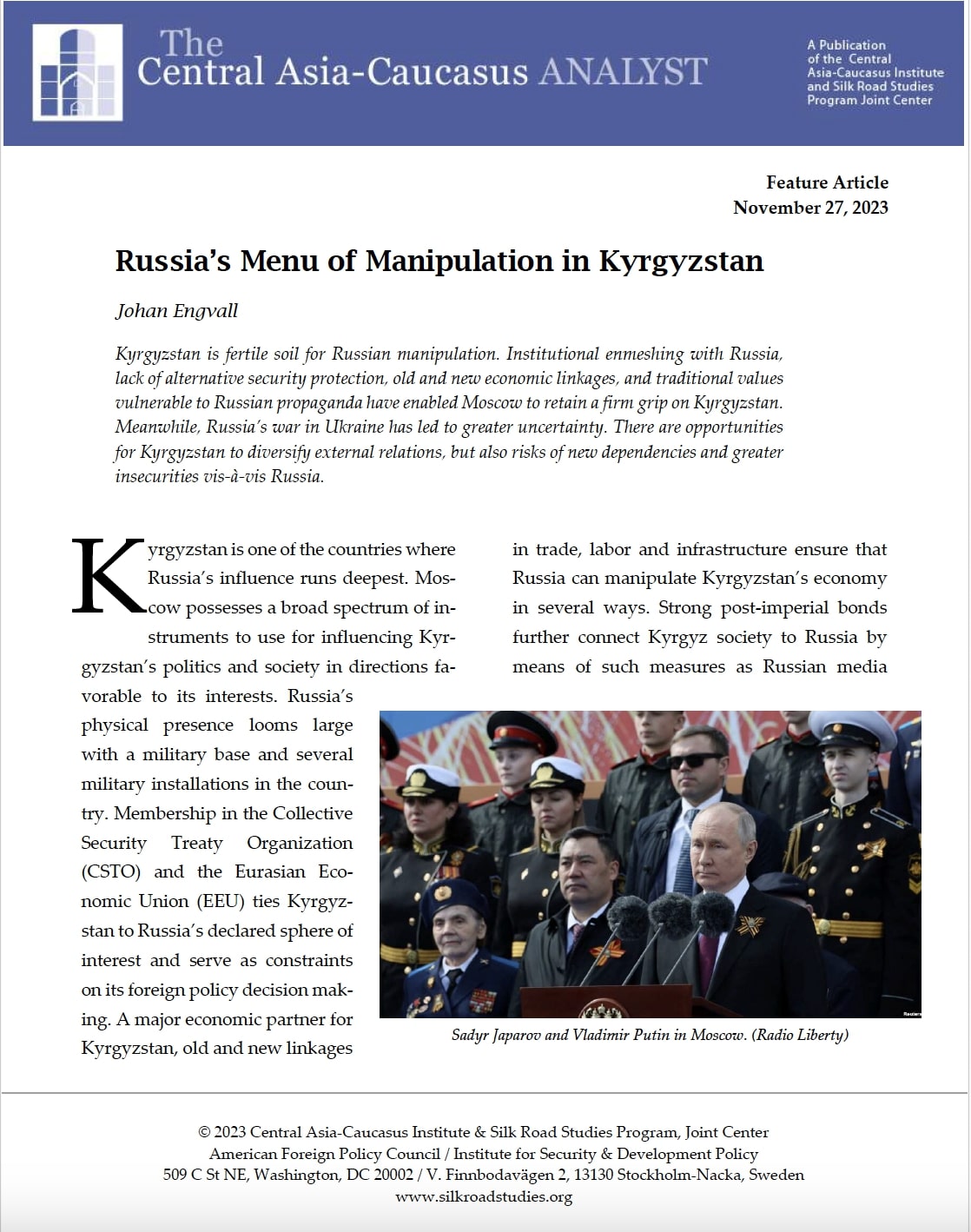
Kyrgyzstan and the Changing Geopolitics of Central Asia and the Caucasus
By Shairbek Dzhuraev
August 30, 2022
Ever since 1991, Kyrgyzstan's international relations have focused on balancing its relation with Russia with developing new international partnerships. In the past decades, the task has become increasingly difficult, as exposed by the war in Ukraine. In the meantime, China has become a critical actor holding the keys to multiple economic issues in the region. Cooperation remains the narrative of Kyrgyzstan's relations with its Central Asian neighbors, although developments on the ground feature a fair share of unresolved conflicts. The paper reviews key developments in Kyrgyzstan's international relations and concludes by highlighting the strengths and weaknesses of the country's foreign policy approach.
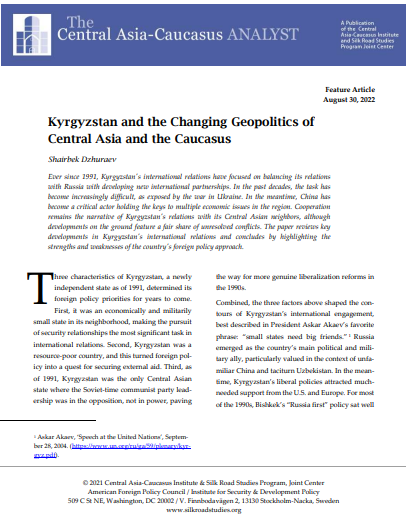



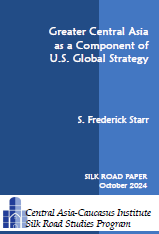 Silk Road Paper S. Frederick Starr,
Silk Road Paper S. Frederick Starr, 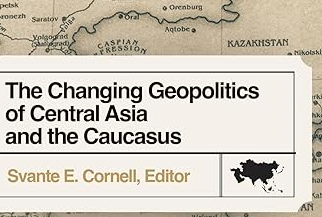 Book Svante E. Cornell, ed., "
Book Svante E. Cornell, ed., "